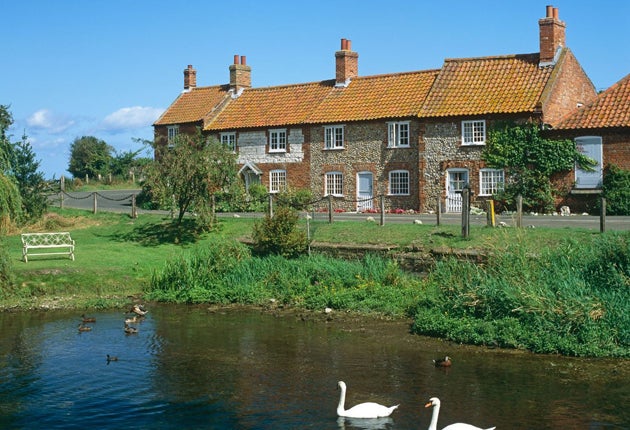A guide to A-road Britian: A29
Don't let George V's dying damnation deter you from Bognor or the often sensational pleasures that mark the Roman road that takes you there. David Randall is transported by southern delight

It is the Road to Bognor, a title which some might find off-putting, but which those of us who have spent half a century travelling to the coast from the London area know is the best-kept secret in southern England. It is, a few notable kinks apart, exceptionally straight (running, as it does, in places over Roman Stane Street). It has villages that are real communities, not tourist traps.
It has several sensational views. And it is almost ridiculously uncrowded.Good though it is to travel the A29 southwards, it is the run north that most rewards, and so that is the way we will go.
We start on the front at Bognor, a resort whose unfortunate first syllable and George V's deathbed curse has made a sort of seaside Neasden, its name alone causing sniggering merriment. As a result, it is under-visited, and long may this continue say those of us with boltholes nearby, who use its sandy beaches and enjoy its conservation areas. They were, after all, good enough for James Joyce, Queen Victoria, Lewis Carroll, Noël Coward, and Dante Gabriel Rosetti - visitors or residents all.
The first eight miles or so - across the coastal plain, and through ribbonly developed Westergate - are but a preliminary to get you and your vehicle in the mood.
Then, swinging left at the village's curious lion-surmounted war memorial, you pass the homely Fontwell race course, joust momentarily with the A27 traffic, before turning off left on to the A29 again, leaving the heavy breathing lorries and dodgems drivers of the big road far behind.
Now starts the most pleasant drive in all south-eastern England. First are the outlying parts of Slindon, a village with a better claim to be the birthplace of cricket than Hambledon. Up a rise and down again and there is Fairmile Botton, nature reserve to the north, scrubbier downland to the south. As a child, I knew the last part of this section as "The Enchanted Wood" because of the arching trees which made the road an open-air nave. It still has charm, but busybodying forestry has thinned its magic a little.
No matter, because at the top, just beyond the excellent Whiteways Café, is a view no Hollywood art director would dare make up: the Arun valley far below, with the South Downs rearing its chalky biceps again on the far side, and, to the north, the Weald with distant, misty hills beyond. You descend Bury Hill like a downhill skier, the road S-bending from side to side, each turn offering you the Arun floodplain spread out like a well-laid tea table.
At the foot is the Squire and Horse, one of the road's few pubs, this one 16th century and with a good restaurant. The rest of the village of Bury you don't see (it's down a lane to the east); ditto Bignor and its remains of a Roman villa, open to the public since 1814 and still delightfully uncommercialised. The road squirms over the plain to Pulborough, through Watersfield (good yeoman Sussex architecture), Coldwaltham (a 13th century church with a rust-coloured, half-timbered tower), and Hardham. This you wouldn't notice but for the road sign, yet it has, down an adjacent little road, a church called St Botolph's which has some of the finest 12thcentury wall paintings in Europe.
The Arun is crossed, a hill taken, and you work your way through the new-build efforts of Pulborough to make something more substantial of itself. Then it's across Sussex farm and horsey country on the straights of Stane Street - broken only by a kink around the pretty stone cottages of Adversane, and the dog-legged Billingshurst by-pass. Just beyond, at Five Oaks, is one of Little Chef's more obliging outlets, and a more than acceptable pit-stop.
On past Slinfold, and there's a fast, straight section beside which cuckoo flowers mass each May in their mildly blushing way. A turn or two, a gentle climb, and you cross the county boundary and into the Surrey Hills Area of Outstanding Natural Beauty. It would be defamatory to describe the road here as anything other than rolling, and it carries before it a view of steep, rising hills that lie like a reclining figure on the approaches to Greater London. And then, just before the road's end at the junction with the A24, a final treat: the village of Ockley, several smart pubs, a cricket green, and sharply gabled houses which look as if they are made of gingerbread.
Subscribe to Independent Premium to bookmark this article
Want to bookmark your favourite articles and stories to read or reference later? Start your Independent Premium subscription today.

Join our commenting forum
Join thought-provoking conversations, follow other Independent readers and see their replies